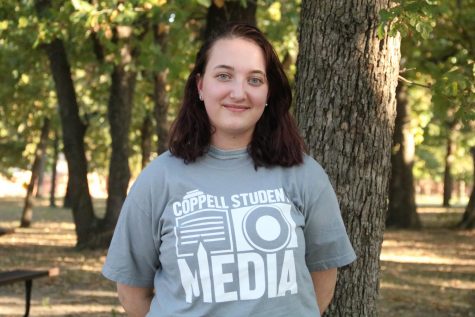“Sign here, please”
Elementary schools should teach ASL instead of cursive
According to The Sidekick communications manager Sreeja Mudumby, cursive has become outdated, but it is still being introduced in elementary school classrooms. Mudumby thinks replacing the cursive requirement with American Sign Language will help young children. Graphic by Ava Gillis.
January 19, 2021
Close your fingers with your thumb on the side of your fist.
Move your thumb to the front of your fist.
Open your thumb and index finger and point them straight up.
A-S-L.
I grew up in a community where everyone had optimal hearing, so I have never felt the need to learn American Sign Language. I was not that familiar with ASL until it was briefly mentioned in a book I read in the fourth grade.
Of course, being a 9-year-old, I didn’t think of it too much.
The further into high school I go, the more I find myself interacting with people from the deaf community. It also meant me struggling to get my message across, feeling guilty, telling myself I would self-teach myself ASL and then forgetting.
The deaf community doesn’t deserve blank faces; they deserve ASL.
I have tried many times to get myself to watch YouTube or TikTok tutorials teaching ASL. To be honest, I’m guilty of not committing to it or doing more. I also have no space to take it as a class in high school, especially because I have finished my language requirements.
Why not learn it when we are young and have less work?
According to The New York Times, the Common Core standards dropped the cursive requirement for elementary schools in 2010, but about two dozen states in America have started to reintroduce the practice into their classrooms, including Texas.
“We implement cursive into our curriculum because it is part of our state standard,” Lee Elementary assistant principal Leigh Ann Howard said. “A lot of elementary kids are learning sign language through the different songs that they learn and sing while in class.”
I think cursive is old and outdated. All my teachers have preferred print handwriting over cursive, not to mention all official documents also mention to write in print. Writing “cursive” as a skill on a resume would not make your application stand out against the 1,000 others waiting in line. Learning cursive in this day and age does not benefit you or hurt you, making its meaningfulness subjective. There is no point in wasting time learning something when we could put that valuable time towards making a positive change in society.
“Cursive is kind of a dying language,” Coppell senior ASL student Lauren Creson said. “Not that many people learn it,and it’s not something that is expected as much, so I wouldn’t say it’s as important to society as it used to be, but ASL could potentially be way more useful.”
ASL is the third most commonly studied language, and I can see very well why it is. Being able to connect with the hard of hearing is not something anyone can do, but it is something everyone should be able to do.
It even ends up being beneficial to you; ASL gives your brain a good workout, enhancing your cognitive abilities and spatial awareness. Cursive is repetitive and stagnant; I can write cursive when I am asleep. ASL also improves your peripheral vision, and being such a visual focused language, it can help boost your visual awareness by forcing you to look at someone’s body language. One of the bigger and more distinct benefits is the overall improvement in communication skills and crystallized intelligence.
“It’s important to learn cursive as well, but ASL creates a connection between people who are deaf, hard of hearing or mute even,” Creson said. “It’s not an easy language to learn, but it would be easy enough to teach kids the basic signs.”
Change in time calls for change in tradition, and having the resources to learn ASL at a young age can not only help us be more skillful, but more inclusive.
Follow @sreejamudumby and @CHSCampusNews on Twitter.












